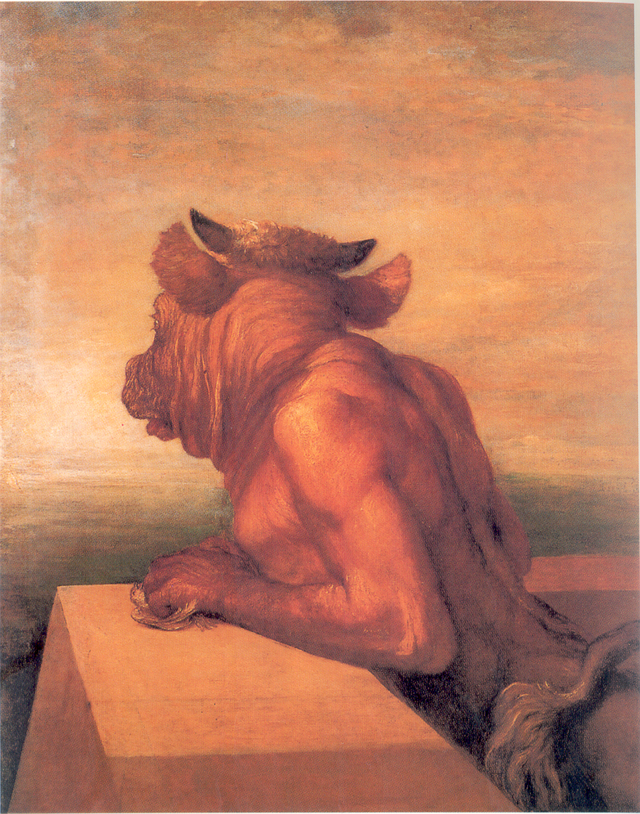The infinity of Asterion — Part II
The second part of the analysis of the story "The house of Asterion" by Jorge Luis Borges continues here.
Link to the first part: The infinity of Asterion — Part I
BRIEF REVIEW ON THE CONCEPT OF INFINITY
Potential and Actual Infinity
The notion of something that has no end or term produces some consternation whenever its apprehension is impossible, since it belongs to the pure field of idealization. The concept of infinity has been, over the centuries, the object of study of great thinkers, both philosophers and mathematicians.
Francisco Vera Fernández de Córdoba (2000), in his essay entitled "History of the idea of infinity", explains that it was Aristotle who introduced a fundamental distinction in the way of conceiving this concept when considering two kinds of infinity: the Potential Infinity and the Actual Infinity. The actual is the infinity in act, which is thought of as a finished whole; while the potential is that which results from an iterative operation consisting of always adding one more element to the last term, that is to say that in this case the infinity appears as something that is never reached, that is not realized.
Aristotle made this distinction to then deny the existence of the actual infinity and accept the potential. In the debates that arose later between nominalists and realists, the way of understanding the infinity marked a clear watershed: the nominalists, like Aristotle, accepted only the potential infinity, since the actual infinity was not for them anymore. that a word empty of meaning; the realists, on the other hand, defended the full existence of the actual infinity. [1]
Cantor's transfinites
On the other hand, mathematical science had at first at first did not need more than the notion of potential infinity to demonstrate its postulates, so that it had eliminated the actual infinity from its bases. This was true until the end of the 19th century, when the mathematician Georg Cantor introduced the transfinite numbers. It is not the purpose of this paper to enter into arduous mathematical definitions, let's just say that transfinites are numbers conceived in such a way that they contain in themselves infinite elements, that is to say that transfinites are actual infinities. [2]
These notions installed by Cantor in mathematics lead to the development of set theory, in which the infinity is studied as a whole [3], which happens to determine several properties that are contrary to our intuition and are paradoxical. Borges has often used the paradoxes of the infinity to translate them literarily.
One of these properties is that an infinite set contained in another can have the same size. Thus, for example, the set of all even numbers has the same size as that of natural numbers (even and odd). [4] That is, although even numbers are a subset of real numbers, the size of both sets turns out to be the same. This property of the infinite sets (contrary to what our intuition suggests, since in this case we tend to think that the set of even numbers would be half the size of the natural ones) is explained because a relationship can be established biunivocal between the elements of both sets. [5]
This paradox, although in other terms, was originally raised by Galileo Galilei; for what is known as Galileo's paradox. We will see later how it is represented in the story that we have to analyze.
[1] Jaime Rest describes a Borges whose philosophical position, although never manifested, would be closely related to nominalism: "it seems unquestionable to consider him, in the whole of his work, as a notorious representative of Aristotelian, nominalist thought" (Rest: 1976, 54) . One might think that Borges would then reject the idea of an actual infinity, but as we will see, Borges seems to insist on not allowing himself to be defined.
[2] Juan Antonio Hernández explains, in the detailed study he does of the story "The Aleph", that Borges knew the Cantorian ideas and used to use them in a literary way when he composing many of his texts (Hernández: 2000).
[3] It is clear then that the theory of sets works with actual infinities, Hernandez says: "By representing the infinity as a whole, this, necessarily, unfolds in various infinite multiplicities that require to be considered as complete totalities and not as inexhaustible progressions" (Hernández: 2000, 132).
[4] Borges himself refers to this particularity of the infinite sets in the essay "The perpetual career of Achilles and the turtle" when commenting on the solution proposed by Russell to the famous paradox formulated by Zeno: "A brilliant acceptance of these facts has inspired the formula that an infinite collection —specification, the series of natural numbers— is a collection whose members can unfold themselves in infinite series. The part, in those elevated latitudes of the numbering, is no less copious than the whole: the precise number of points in the universe is what is in a meter of the universe, or in a decimeter, or in the deepest stellar trajectory " Discussion (Borges: 1980, 49).
[5] Thus the 1 of the set of natural numbers is related biyectively with 2 of the set of pairs, 2 with 4, 3 with 6, 4 with 8 ..., 3411 with 6822; any natural number that we imagine, however large, will always find its counterpart between the even numbers and vice versa.

Congratulations @reyvaj! You received a personal award!
You can view your badges on your Steem Board and compare to others on the Steem Ranking
Do not miss the last post from @steemitboard:
Vote for @Steemitboard as a witness to get one more award and increased upvotes!